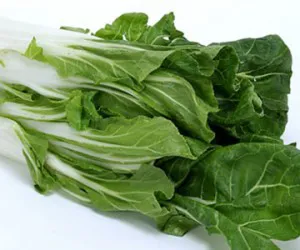 Swiss chard (Beta vulgaris var. cicla) is a leafy vegetable that is very appreciated in Turkey for its nutritional properties. It is a green, leafy vegetable and it can be eaten boiled, baked and raw. The leaves contain high levels of vitamin C (30 mg/100 g), vitamin A (6116 IU), and minerals such as potassium (379 mg/100 g), sodium (213 mg/100 g) and iron (1.80 mg/100 g).
Swiss chard (Beta vulgaris var. cicla) is a leafy vegetable that is very appreciated in Turkey for its nutritional properties. It is a green, leafy vegetable and it can be eaten boiled, baked and raw. The leaves contain high levels of vitamin C (30 mg/100 g), vitamin A (6116 IU), and minerals such as potassium (379 mg/100 g), sodium (213 mg/100 g) and iron (1.80 mg/100 g). The main problems occurring during the shelf-life of fresh-cut Swiss chard leaves are the color variation and bad-odor development. Many pre- and post-harvest conditions can affect leaf color.
In pre-harvest stage, the color loss can be due to the diseases, mineral nutrients deficiency, growing conditions and species, while in the post-harvest stage the color loss can be due to unsuitable storage conditions, mechanical injuries, enzymatic disorders and ethylene presence. The most of metabolic processes, responsible of produce quality decay, depend on temperature and light, thus proper storage and distribution conditions may improve the shelf-life of fresh-cut Swiss chard.
There is information on the storage conditions and processing effects on shelf-life of fresh-cut Swiss chard leaves, but the research on the light effect on shelf-life of this vegetable is very limited. In this regard, the few works on light effect recommend the dark storage for fresh-cut Swiss chard because the light can accelerate the leaves yellowing.
During market distribution, the fresh-cut products are put in refrigeration and light conditions, and, in the case of Swiss chard, the light presence accelerates the yellowing of the leaves reducing the shelf-life. For this reason, Ufuk Kasim and Rezzan Kasim, researchers of Department of Postharvest Technology at Kocaeli Univeristy (Turkey), have studied the effect of different light intensity in preserving the leaf color in fresh-cut Swiss chard during shelf-life.
For the study the following treatments were tested:
- Fresh-cut samples were stored under darkness (Control)
- Fresh-cut samples were stored constantly under light (Continuous light)
- Fresh-cut samples were stored for 15 minutes per hour under light (Periodic light)
The results showed that the chlorophyll content decrease and the fresh weight loss were greater in the samples exposed to a continuous light during shelf-life than in the samples stored at darkness or exposed to a periodic light.
At the beginning, the chlorophyll content was an average 400 mg/g FW, after 14 days the samples stored at darkness and exposed to a periodic light contained respectively 60% and 55% of initial value, while the samples exposed to a continuous light contained only 22% of the initial value. The fresh weight loss increased during the shelf-life, after 14 days it decreased by 8% in samples stored in darkness, by 12% in the samples exposed to a periodic light, and by 16% in the samples exposed to a continuous light.
The present study has shown that the light accelerate the leaves yellowing in fresh-cut Swiss chard, thus the authors suggest to use a low light intensity during market distribution so that the quality decay can be slowed down.
Original research work. Ufuk Kasim M., Kasim R., "Color changes of fresh-cut Swiss chard leaves stored at different light intensity", 2012, American Journal of Food Technology, Issue N. 7(1), pagg. 13-21. Further info: scialert.net/fulltext/?doi=ajft.2012.13.21&org=10
